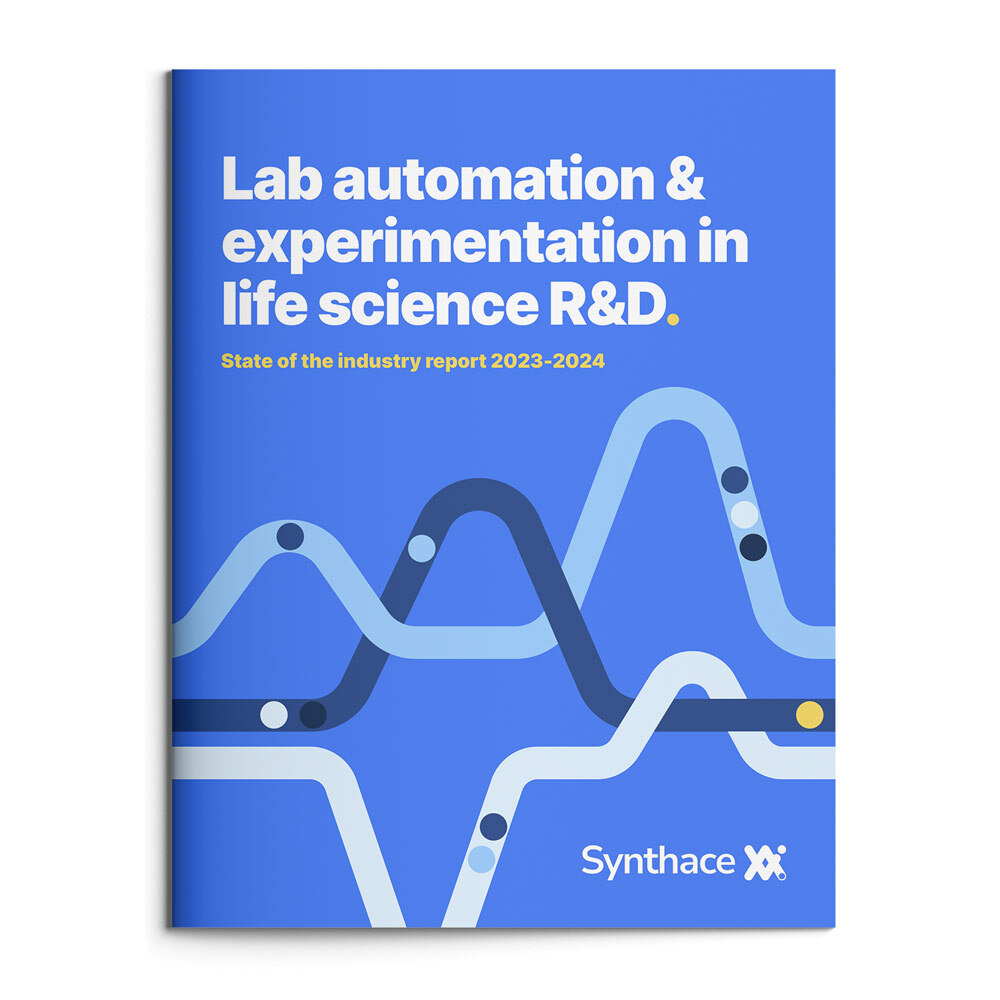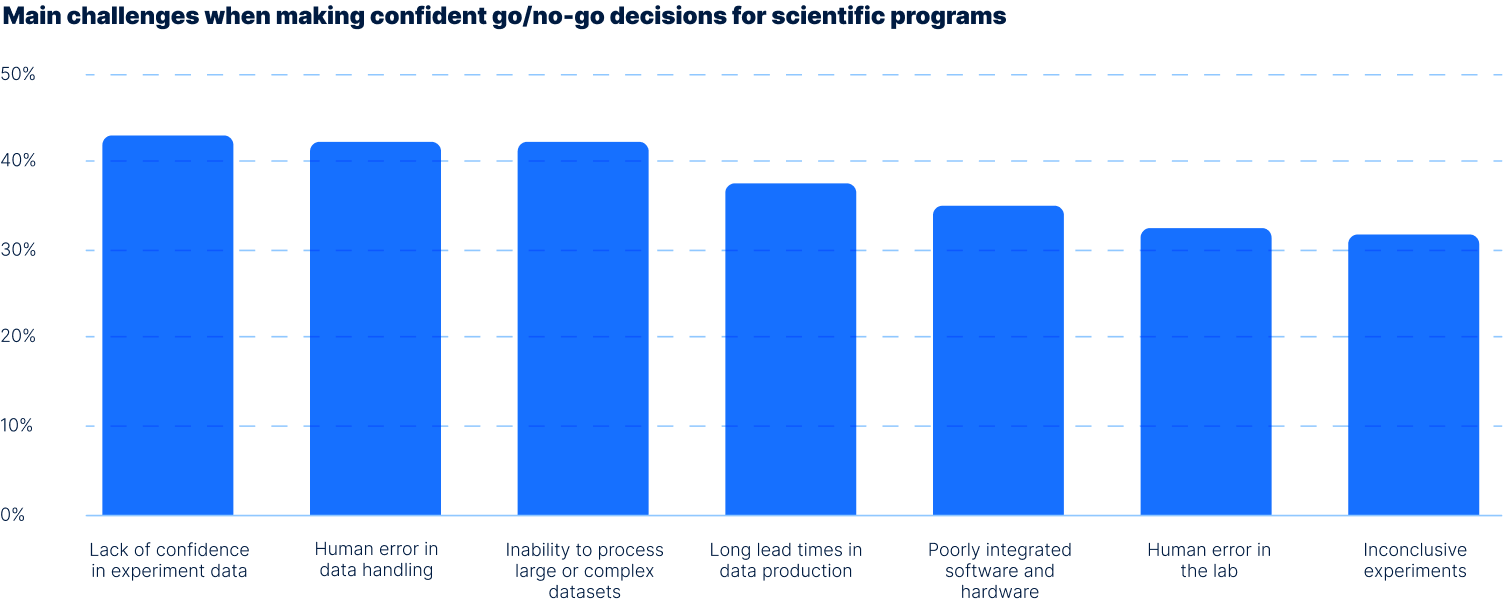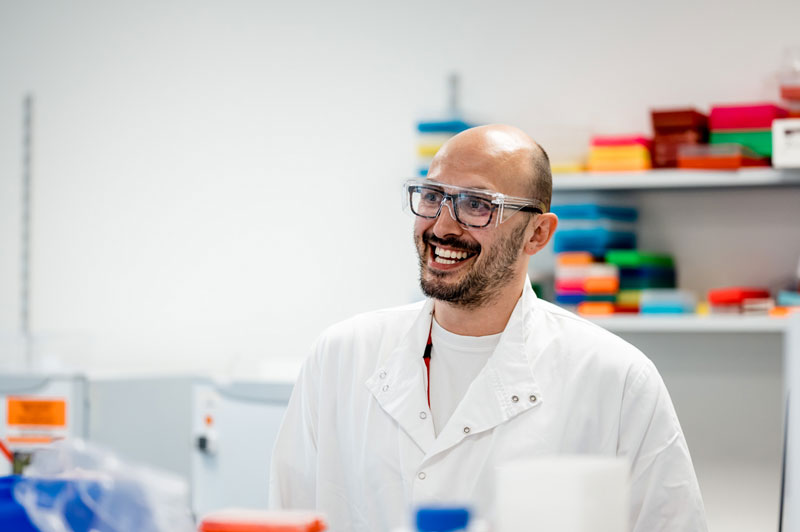Automation & experimentation trends in life science R&D
This report highlights challenges across 4 key themes:
• Data, and how it helps or hinders effective decision making
• Automation, and how it still represents a major hurdle for many teams
• Experimentation, and its burden on the individual scientist
• People, and how they are stretched too thin and under-supported
Download the report:

Trouble with automation and experimental insights
As an R&D leader in the life sciences, do you have trouble making go/no-go decisions based on your team's experimental data? Is your team struggling to automate your experiments and fully utilize your lab equipment?
Turns out you're not alone.
We surveyed a total of 250 scientists and decision makers working in life science R&D to understand their challenges and barriers in relation to lab digitalization, automation, experimentation, and data.

43% of R&D leaders can’t make decisions based on experiment data
The top 3 barriers revolve around the production, handling, and analysis of experimental data.

"Working in the life sciences is a complex and thrilling challenge. Should anyone need it, I hope this report serves as a reminder of this, and the work we still have left to do."
Markus Gershater
Co-Founder & Chief Scientific Officer
About the report
We surveyed a total of 250 scientists and decision makers working in life science R&D to understand their challenges and barriers in relation to lab digitalization, automation, experimentation, and data. Respondents were evenly split across “decision makers” (n=125) and “scientists” (n=125). The survey ran in earlier on this year via an independent research company, with all respondents based in the United States.

About Synthace
Synthace is a digital experiment platform, helping life science R&D teams run more powerful experiments. It digitizes experiments from end to end: with minimal training, scientists can design and plan reproducible experiments, simulate them ahead of time, run them on their automation equipment, and automatically structure all of their experimental data and metadata in a single place.
Learn More